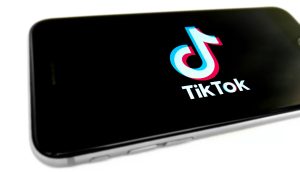The Super Bowl has earned the monicker The Big Game for a reason. In a fractured media landscape, it draws millions of eyeballs every year. It’s the kind of appointment television that barely exists today. Last year’s audience for the broadcast was 113 million in the U.S. and 8.6 million viewers in Canada according to Statista. There is some speculation that the 2024 event could attract up to 130 million south of the border – possibly because of the Taylor Swift effect.
Of course, the event is also a major marketing extravaganza where many people tune in just for the ads. The audience is huge, which justifies the huge price tags for spots the in game: roughly $7 million USD for a 30-second spot. But, are the flashy ads worth the investment, particularly for Canadian advertisers?
Jeff Thibodeau, president of PMX Canada, part of Publicis Media, says the conference championship games leading up to the Super Bowl were some of the highest rated ever, and that is foreshadowing what could be the most viewed live event in TV history. “The NFL has seen a growth in audience, particularly with the fringe or new entry fan, no doubt attributable to the Taylor Effect. Having the Kansas City Chiefs in the game, will undoubtedly impact viewership positively.”
While a spot is expensive, he says that’s partly due to the repeal of simultaneous substitution, meaning the U.S. feed on a CBS channel will run U.S. commercials, while Canadian ads will appear on the CTV broadcast feed.
Thibodeau says, “Regarding the Super Bowl and advertising in Canada, definitely yes, the Super Bowl presents a highly effective platform for Canadian brands to allocate their advertising budget. Sports, particularly the Super Bowl, continue to represent one of the last bastions of appointment television. This live event not only garners substantial viewership, but the commercials featured during the broadcast have become a significant draw, resulting in remarkably low levels of commercial avoidance. While younger demographics may opt for streaming platforms to view the game, the Super Bowl predominantly remains a television-centric event, with substantial co-viewing.”
According to the Big Game Report 2024 from global research technology company Cint, 69% of Americans plan to watch the game. That’s down from 77% the previous year. The biggest fans are the older generations.
The report, based on survey data gathered in the U.S. using The Cint Exchange platform, asked survey participants about ads in the big game. Humour is the most important factor for their enjoyment of an ad to 67% of respondents and 56% say Super Bowl spots influence their purchase decisions following the big game. Younger demos are more likely to be influenced by the ads than the older generations. Following humour, other factors influencing the memorability of an ad are product (42%), the celebrity featured (38%), the brand associated with the ad (37%), and placement around the game (22%).
Deena Markus, senior director, integrated investments for UM, says Super Bowl ads offer massive audience reach, creating significant brand awareness through memorable and flashy commercials. Even with the highly cluttered environment, she says that the big game gives advertisers an opportunity to show off their creative in a place where viewers are leaned in and are as excited about the commercials as they are the game.
“However, their high cost requires careful budget assessment. Super Bowl commercials are known for their creativity and entertainment value. If a Canadian brand can produce a memorable and impactful ad, it can contribute to long-term brand recall and positive associations. While broadcast ads during the game are a traditional approach, brands can also leverage digital platforms and social media to extend their reach. Creating teaser campaigns, releasing extended versions of commercials online, and engaging with the audience on social media can maximize the impact.”
Other findings about Super Bowl advertising include that consumers are more likely (67%) to rewatch an ad if it features their favourite celebrity or influencer. They are also more likely to remember an ad they see on TV (46%) than an ad on social media (42%). Some consumers prefer to watch the ads on YouTube (38%) or Facebook (37%) in the lead up to the game. That said, only 26% would watch the ads the next day on social media, compared to 89% who view them during the game.
Brent Jones, director of media investment and activation at Horizon Media Canada, says advertising during the big game can be very effective, but the execution matters. “In the U.S., there’s a lot of production value thrown behind the ads and they do very well. The in-game spots resonate and I think storytelling goes a long way as well. You have to have one or two or three ads telling the story of the game, or they have a lead up to the game. I think that’s where you’re getting the most value. It can’t be a standalone. If you’re just running your standard ad, it really has less of an impact but you’re still getting the reach the Super Bowl provides.”
There are other ways to connect with Super Bowl audiences without buying a flashy in-game spot. Jones says with digital advertising, a brand can use site takeovers on game day on different sites. “We’ll see a lot of that and not just the sports sites but also on pop culture sites, to own Super Bowl Sunday. That way you’ll see the takeover at home and at resto bars for the same brand.”
Christina Summers, head of ad sales for Roku Canada says the Marquee banner on the Roku Home Screen that is delivered before viewers open their channel of choice is a good way to stand out in a unique placement, while still being part of the game and the audience it draws. “For advertisers that may not be able to invest the dollars required for the Superbowl linear ads, these formats offer alternatives and can be great options to consider. Aligning with this event can make sense for marketers if that is the audience they are trying to reach.”
In addition, she says that using products like Roku’s Auto Content Recognition (ACR) technology, captures audiences watching on Roku devices and TVs, and those watching the game on linear TV. From that, custom segments can be created to allow marketers to continue to reach these audiences after the Super Bowl to extend their reach and message for a longer period of time.
























